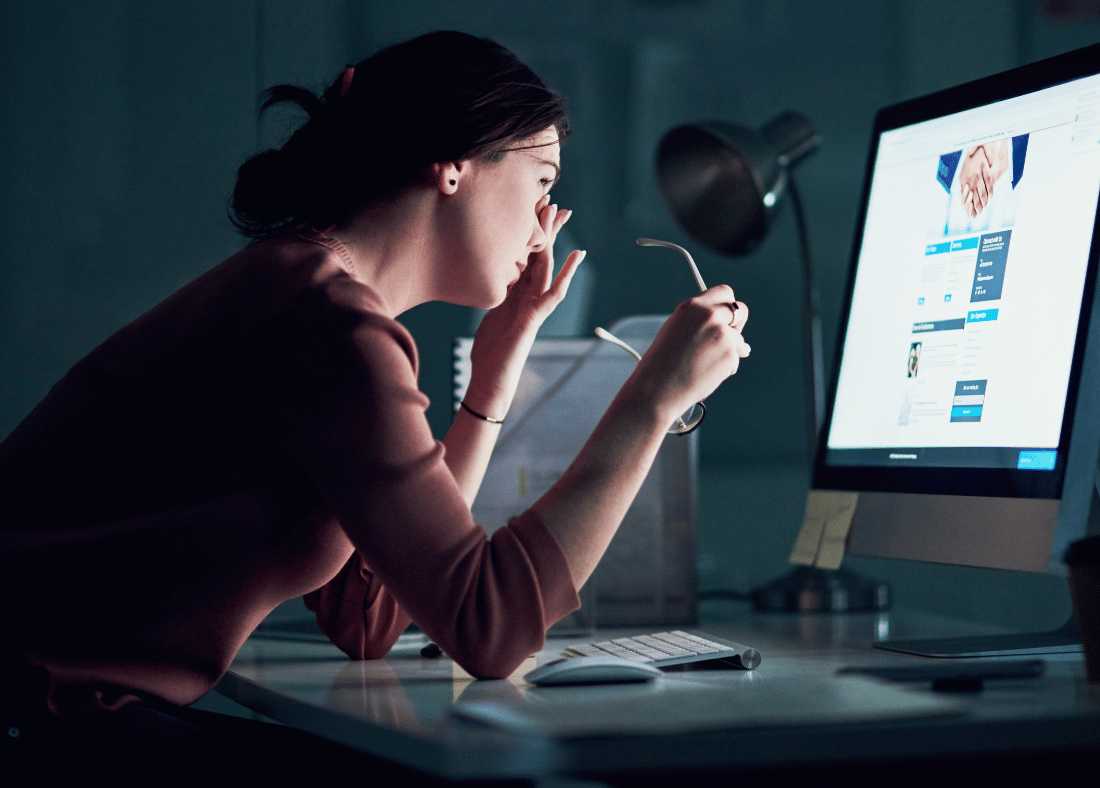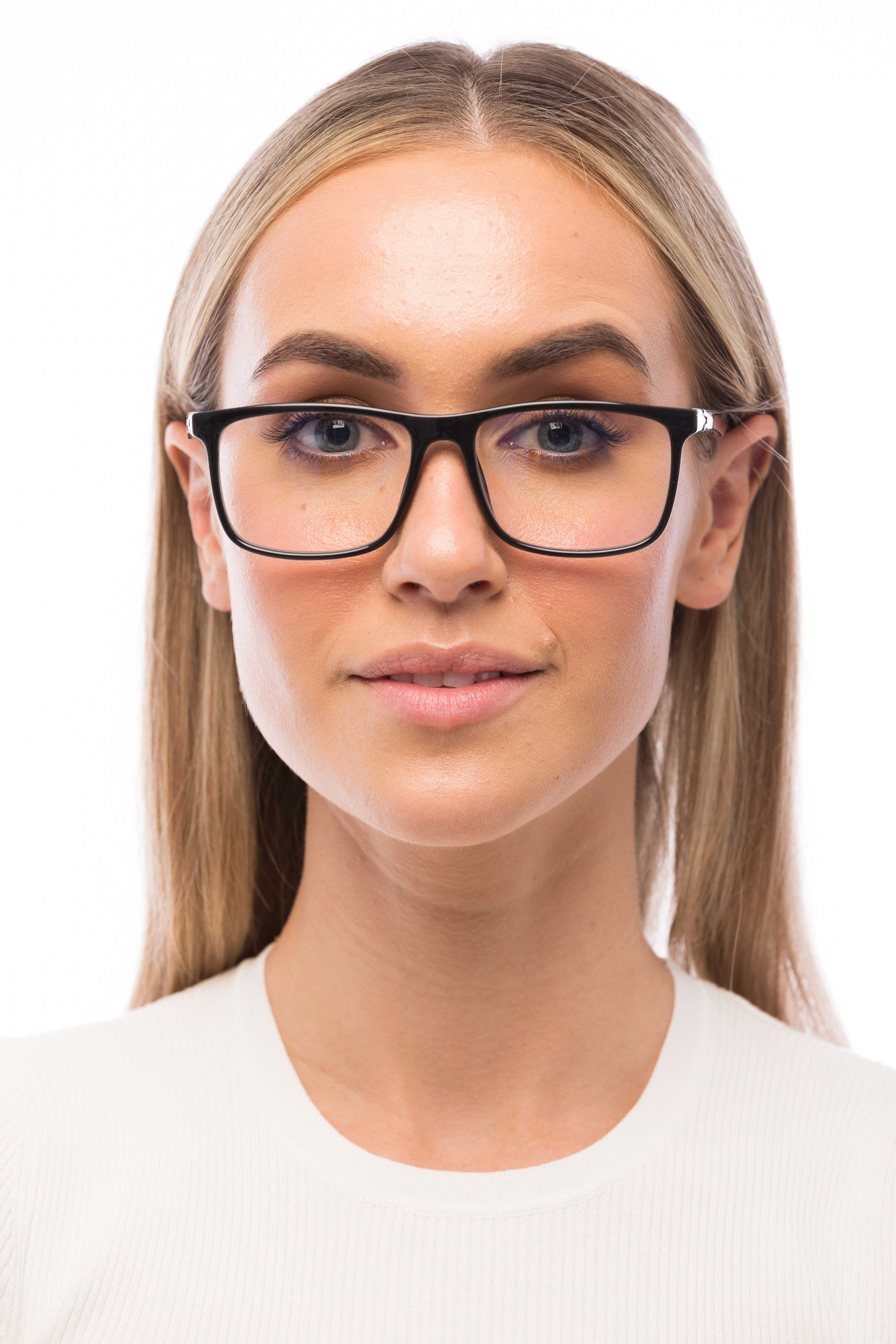What is Eye Strain?
Andy Mant
Have you ever felt the need to rest your eyes throughout the day? Then you may be experiencing eye strain, a common eye condition that affects over two-thirds of Australians. It’s not normally a serious condition, but it is a frustrating one, and one that’s also on the rise due to the increasing amount of time we spend looking at computer screens.
In this article, we’ll run through the ins and outs of this common eye problem and offer some guidance on the most effective treatment methods to common symptoms.
What Is Eye Strain?
Most eye conditions are the result of genetics or injury. Eye strain is different in that it can affect anyone. It’s caused by intense, prolonged use of the eyes. It’s been around forever, but it’s increasingly common now due to the proliferation of digital screens. If you work in front of a computer screen all day and fail to take regular breaks, then over time, your eye muscles will begin to feel tired.
The Causes of Eye Strain
Anything that involves using your eyes for long periods can cause eye strain. This could be driving long distances, reading, or engaging in detailed focused work, such as writing. But by far, the most common cause of eye strain is digital screens.
This study shows that people tend to blink less when using a digital device. The combination of dry eyes and overuse of the eyes results in pain and soreness. However, while the overuse of your eyes can result in digital eye strain, it’s not a long-term problem.
How to Know if You Have Eye Strain
You can normally self-diagnose eye strain. If you have one of the following symptoms, then you may have eye strain.
- Eyes feel dry
- Watery eyes
- Blurred vision
- Itchy eyes
- Light sensitivity
- Headache
- Shoulder and neck pain.
Who’s Prone to Eye Strain?
Anyone who uses their eyes for an extended period without taking breaks can get eye strain. Adults who work with computers all day are likely to have eye strain, as are children who spend long hours on their smartphone or playing video games.
How to Treat Eye Strain
Eye strain is rarely a serious condition. By modifying your behaviour and making a few changes, you can relieve the symptoms of the condition. However, if you think your eye problems may be a result of something other than computer vision syndrome, it’s best to get in touch with an eye institute to rule out a more serious problem. If you believe your eye issue is due to overuse of your eyes, try taking the following steps.
Take a Break
Eye strain most commonly occurs when you use your eyes too much. The solution? Give your eyes a break. If you work with computers, it’s recommended that you rest your eyes every twenty minutes or so. The 20-20-20 rule is an effective method for combating eye strain. This is when you focus your eyes on a spot 20 feet away for 20 seconds every 20 minutes.
It takes next to no time and requires no equipment, yet it will give your eyes the breather they need.
Change Your Screen Position
Your eyes will be working overtime if the screen you’re looking at is positioned too close or far from your face. Whenever possible, keep the screen around an arm’s length distance away from your eyes. The part of the screen you’re looking at should also be just below your eye level, which along with helping to prevent eye strain, will also reduce the risk of poor posture.
Change Your Screen Settings
Your screen’s settings will impact how hard your eyes have to work to focus. Try to find a setting that isn’t too bright or too dim. There is usually a button you can press to change the brightness of your screen.
You should also ensure that the screen settings aren’t too small. Your eyes will work overtime if the screen’s text isn’t large enough to read comfortably.
Invest in Eyewear
If you work with computers and experience eye strain, then it may be worthwhile investing in specialised computer eyewear. Blue light glasses help to block short wavelength blue light, which has been shown to be one of the primary triggers for digitally induced eye strain. You’ll only need to wear the anti-blue light glasses while you’re working with screens. At Bon Charge, we have a range of effective and stylish blue glasses available for purchase.

Eye Drop Relief
People tend to blink less when they’re focused. If you’re focusing on a computer all day, then you may experience a severe reduction in your blinking rate, which will result in dry eyes. You can avoid this condition by actively blinking more. However, this can be hard to achieve on a regular basis. Instead, look at using artificial tears, which are eye drops that can simulate the eye’s natural lubrication.
Improve Air Quality
Intense focus on a digital screen is the primary cause of eye strain. But it’s also worth looking at the air quality in the room in which you work, which could be a secondary contributing factor. Rooms that have dry air, or which have running cooling fans or heating systems, can cause eye strain.
You can treat this issue by investing in a humidifier (if the air is dry), changing the settings of the cooling and heating systems, or moving to a different part of the building which does have the same air problems.
Final Thoughts
It’s always been possible for people to get eye strain. And yet, we can think of it very much as a modern condition. With people spending more and more time staring at digital screens, the rate at which they are experiencing eye strain has increased significantly.
The good news is that, while eye strain is annoying, it’s normally not a serious condition. With so many treatment options available, it’s more than possible to make eye strain a thing of the past. Use the tips that we’ve outlined above, and you should notice an improvement in your condition soon.



